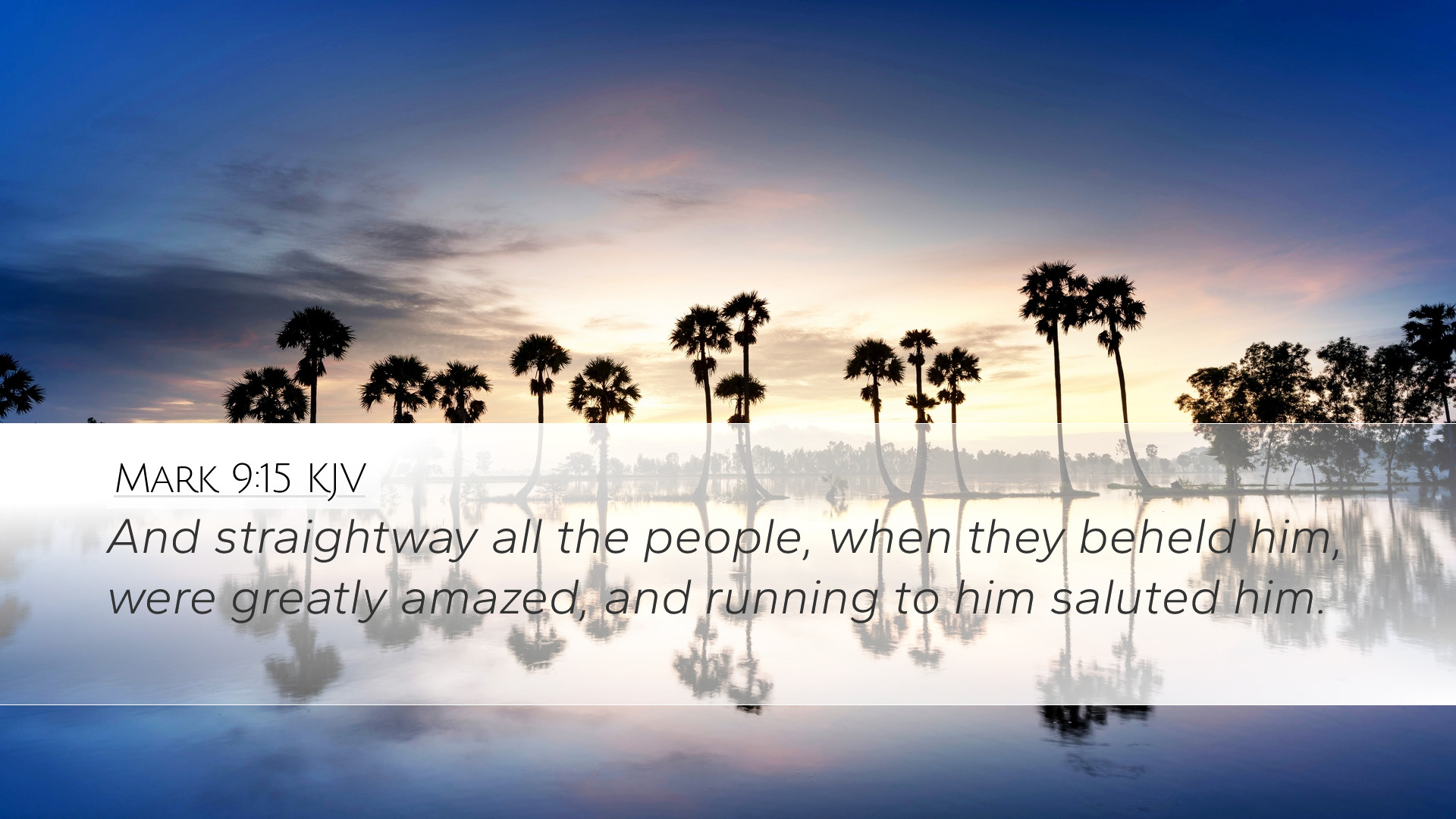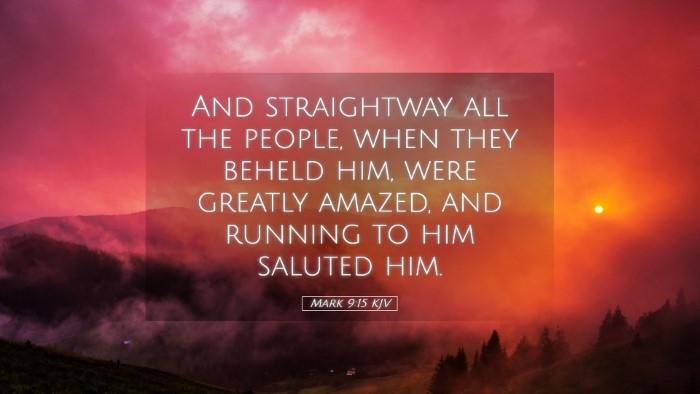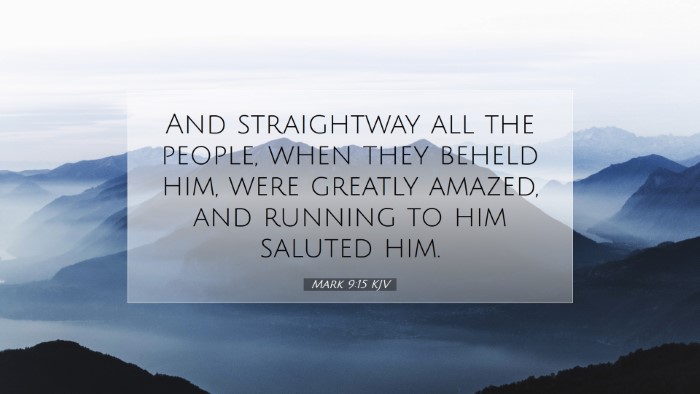Commentary on Mark 9:15
Verse Context: Mark 9:15 states, "And immediately all the crowd, when they saw Him, were greatly amazed, and running to Him, greeted Him." This verse appears in the context of the miraculous events surrounding Jesus, including His transfiguration and the healing of a possessed boy.
Exegesis and Analysis
This passage reflects the profound impact of Christ on the people around Him. The crowd’s amazement signifies the divine authority and charisma of Jesus, drawing them towards Him, despite their previous doubts or fears.
The Nature of the Crowd's Reaction
Matthew Henry highlights the initial shock and awe that Jesus invokes in the crowd. Their amazement stems from the miraculous nature of His works and His authoritative demeanor. Henry suggests that the crowd symbolizes humanity's natural inclination to seek out the extraordinary and the divine.
Albert Barnes comments on the phrase "greatly amazed," noting that the Greek word used conveys a sense of intense astonishment. He elaborates on the surrounding events, emphasizing the contrast between the disciples' inability to heal the boy and Jesus' impending demonstration of divine power, which elevates the expectations of the onlookers.
Spiritual Implications
This astonishment is not merely emotional; it speaks to a spiritual yearning inherent in humanity. Adam Clarke connects this universal response to the innate desire for divine intervention in human affairs. Clarke posits that the human heart is drawn to the miraculous and the supernatural, which serves as a reminder of our need for God’s grace and power in our lives.
- Human Nature: The amazement of the crowd reflects a deep-seated acknowledgement of Jesus’ identity as the Messiah.
- Cultural Context: In the first-century context, public displays of wonder were common when authority figures or prophets performed miracles.
- Theological Significance: Jesus’ ability to command such reactions illustrates His divine nature and the fulfillment of Old Testament prophecies regarding the Messiah.
Contrast and Conflict
Henry also points out that this moment occurs amidst conflict, particularly the disciples' inability to cast out the demon. This juxtaposition highlights the need for faith and reliance on Christ’s authority. The crowd’s astonishment serves not only as a reaction to Jesus' presence but also as a reminder of the disciples' struggles.
Faith and Doubt
Barnes notes that the contrasting experiences of the crowd and the disciples serve as a focal point for addressing themes of faith and doubt. While the crowd is captivated by Jesus, the disciples’ earlier failure to heal the possessed boy signifies a moment of weakness in their faith journey. This tension underscores a vital lesson: human inability stands in stark contrast to divine capability.
Jesus' Divine Authority
Clarke emphasizes the authority of Christ evident in this scene. The crowd’s approach to Jesus symbolizes a recognition of His power over both spiritual and physical maladies. Their eagerness to greet Him illustrates an understanding (or at least an instinctive belief) in His ability to remedy their spiritual and physical woes.
Miracles and Ministry
This event prefaces one of Jesus’ key miracles—healing a boy possessed by an evil spirit. The approaching crowd encapsulates the human search for wholeness and redemption, which every pastor and theologian can reflect upon within their ministry contexts.
- Miraculous Ministry: The expectation of miracles in ministry remains integral to the Christian faith. In a world fraught with suffering, the anticipation of Christ's transformative power offers profound hope.
- Pastoral Reflection: Pastors are encouraged to consider how they present the idea of miracles, balancing belief and doubt amongst congregations.
- Scholar Engagement: Scholars may examine how this passage informs understanding of Christ’s role as a healer and redeemer.
Conclusion
In summary, Mark 9:15 encapsulates the powerful draw of Jesus and the human disposition towards awe in the face of the divine. For pastors, students, and scholars, this verse serves as a convergence point of theology, human experience, and divine sovereignty. The reactions of the crowd remind us of our constant need for Christ’s intervention in our lives, challenging us to explore deeper themes of faith and trust in His authority.
As we reflect on this passage, let us be mindful of the roles we occupy: are we among the amazed crowd, the struggling disciples, or perhaps, at times, veering into doubt? May our studies challenge us to approach Jesus with renewed faith and appreciation for His magnificent works.


